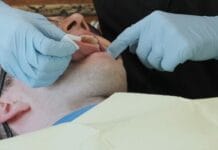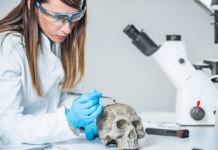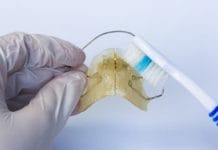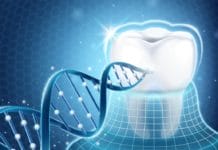Sunny sky, ocean breezes, and palm trees − that is what you can look forward to when you decide to relocate to southern California. The part you may not look forward to is the detailed and time-consuming process to obtain your California dental hygiene license.
In my experience, “time-consuming” consisted of a great deal of wait time, much of it due to the COVID-19 pandemic. But even without a pandemic, the licensing process can take several months. For those of you considering relocating to a place that will give you outstanding weather just about every day, here is what you need to know.
Self-Regulated
The first important thing you should know is that California has its very own self-regulated dental hygiene board. The Dental Hygiene Board of California’s (DHBC) responsibilities include issuing, reviewing, and enforcing dental hygiene licenses. The DHBC is responsible for developing the law and ethics examinations that all licensees must complete successfully. Supplementary tasks of the DHBC include promulgating regulations, establishing and maintaining fees, oversight and approval of dental hygiene educational programs, and continuing education requirements for all dental hygiene licensure categories.1
Once you are licensed in California, the DHBC is a remarkable resource and advocates for the profession of dental hygiene in countless ways. In fact, during my licensure process, I contacted the DHBC on numerous occasions, and the staff was happy to help me through the process. It seems that they recognize the many hurdles an applicant may face during their journey to obtain a California dental hygiene license, and they make an earnest effort to assist with that process.
What is the Process?
For me, it meant retaking the Central Regional Dental Testing Service (CRDTS) exam, completing a California board-certified course, passing a law and ethics exam, and completing the actual application. With the COVID-19 pandemic, that meant it took a total of seven months to complete the necessary requirements in order to obtain my California dental hygiene license.
The requirements may differ for each applicant depending on the number of years you’ve been in practice and dependent upon which clinical boards exam that you have successfully passed. Based on the current DHBC applicant requirements, there are two options: the first is licensure by credential, and the second is licensure upon passing a clinical exam within the last two years.
The DHBC provides a checklist of requirements for each of these application options. Licensure by credential is available to applicants who have been practicing for a minimum of five years. Personally, I fell into an “unlucky” category since it had been three years since I passed my initial clinical exam, and I had not yet been practicing for five years.
Reliving the Clinical Exam
As most can imagine, the thought of retaking the clinical dental hygiene exam can be daunting. I knew it had to be done, though, and I unenthusiastically submitted the necessary documentation and payment to retake the CRDTS exam.
I selected CRDTS because that is the clinical exam I took upon graduating from dental hygiene school. So I felt that a sense of familiarity might relieve some of the stress associated with the exam. Initially, I was assigned a CRDTS examination date in early spring. However, due to COVID-19, it was postponed for several months.
Eventually, I was reassigned to take the CRDTS examination in Wisconsin, my home state. California will allow applicants to complete the CRDTS examination in any state that offers it, but successful completion must be within two years of your application. The Wisconsin exam date was the earliest rescheduled date available to me, so it seemed worth the trip back home.
The weeks leading up to the exam were filled with stress that I had not experienced the first time. I didn’t have the convenience of being associated with a dental hygiene school. So that meant screening a patient in his kitchen, purchasing new instruments, and finding my own PPE to bring to the exam.
On the day of the exam, I felt ready − nervous, but ready. I felt that I had experience on my side this time. Even with the years of clinical experience I had gained, however, the clinical exam was an extremely stressful experience. My first two submissions were denied. On my third submission, I submitted two wisdom teeth. I had half the time, double the amount of teeth, and two of the hardest teeth to access.
But I did it, and I passed. It was an extremely frustrating and stressful experience, but nonetheless, I was relieved to have two passing CRDTS scores under my belt and one that California would accept!
Required Course
Each applicant is required to take a California board-certified course on local anesthetics, nitrous oxide, and soft tissue curettage. The course is required for any applicant who did not graduate from a California dental hygiene program. Yes, everyone. Even if you are licensed in another state to provide local anesthetic and nitrous oxide, the course is still required.
In my experience, the course itself was informative, relaxed, and reiterated my skills. Within my class, there were several dental hygienists who had been practicing for many years, even decades, and some expressed appreciation for recalibration of their local anesthetic techniques. Although some may feel this course to be redundant, my revelation was that it reaffirms the highest standards of our profession and ensures highly educated and skilled clinicians.
Lots of Paperwork
The application process is detailed and time-consuming. Each applicant must provide documentation of several items, such as their passing national board exam score, out-of-state certification forms, fingerprinting documentation, and proof of completion of an ADA radiation safety program.
The application can be completed entirely online and seems to be the most efficient option over mailing your documents to the DHBC. After successfully completing the application, the DHBC must process it, and that process can take up to 90 days. However, it seems the average processing time is closer to 30 days.
During those 30 days, I began interviewing for a dental hygiene position with a sense of optimism that I would be granted my license very soon.
California’s Version of Ethics
However, I was not done yet! Once the DHBC has approved the application, each applicant must pass the California Registered Dental Hygienist Written Law and Ethics Examination. The examination is proctored and must be taken at a designated examination site. Fortunately, one of the quickest parts of the entire process is receiving the test results for the law and ethics exam (given to you immediately after you complete your exam). Rest assured, after the successful passing of the law and ethics exam, the license should be active within 24 to 72 hours.
After seven long months of diligently and relentlessly completing each of the required tasks, I received my California dental hygiene license on my birthday. There was an irony in that it felt like the best gift I could have been given.
The entire process can be challenging at times and feel redundant to those who are fully licensed in other states. However, after an in-depth conversation with members of the California dental hygiene board, I better understood the intent of the process. It seems the intent of rigorous requirements for applicants is to safeguard the high standards and maintain the professionalism of dental hygiene through the collaboration of clinical skills, enhanced competence, and comprehensive continuing education.
Need CE? Click Here to Check Out the Self-Study CE Courses from Today’s RDH!
Listen to the Today’s RDH Dental Hygiene Podcast Below:
Reference
- Dental Hygiene Board of California. Retrieved from https://www.dhbc.ca.gov/index.shtml#welcome












